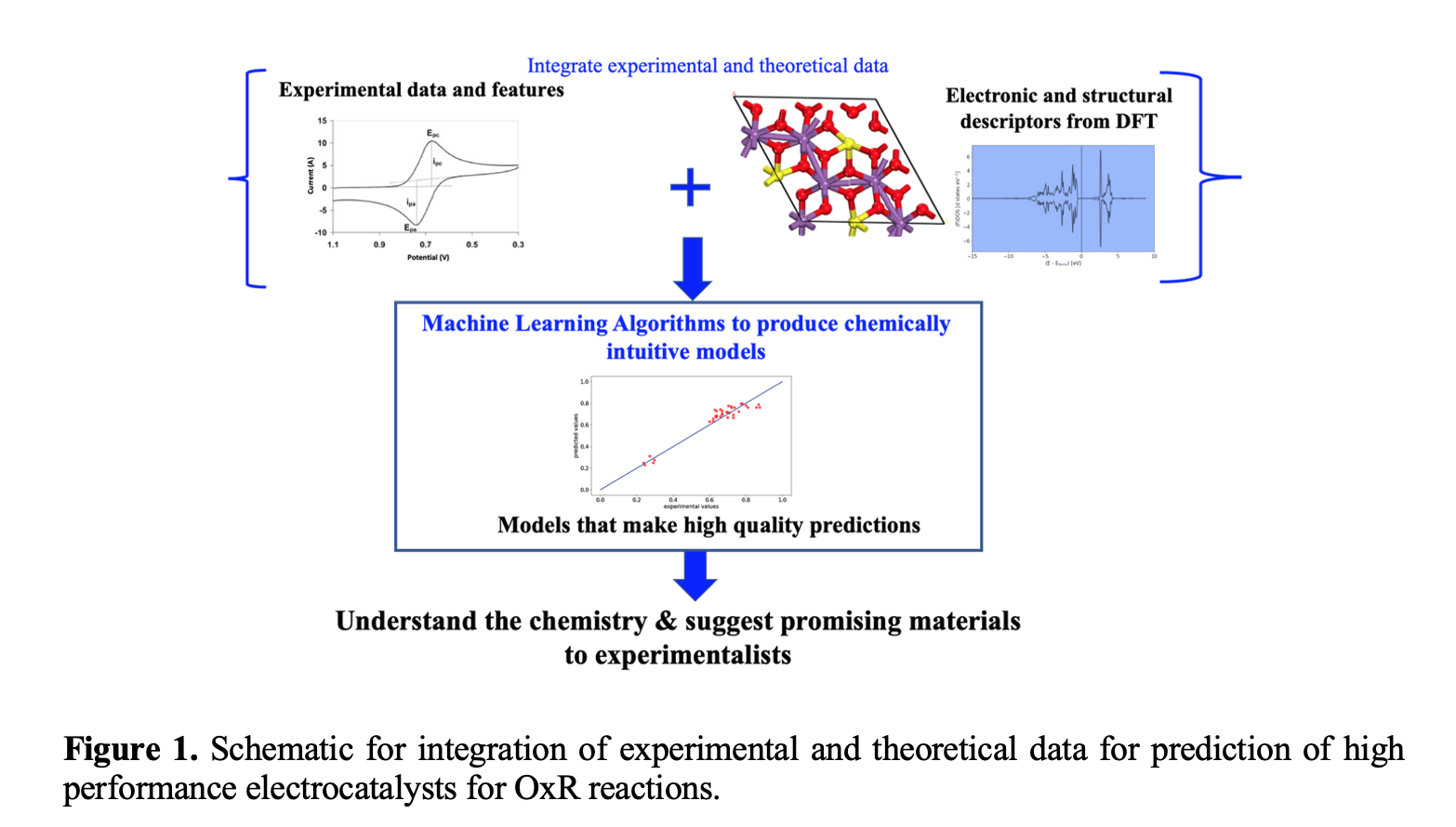2022 Annual Meeting
(477f) Integrating Experimental and Theoretical Data for High Quality Predictions of Electrocatalytic Performance
Authors
The methodology leverages prototype Density functional Theory (DFT) calculations to extract electronic and structural descriptors from bulk crystal structures of materials, and then, employ machine learning to efficiently arrive at the right set of descriptors for making predictions under catalytically relevant conditions. Mathematically simple and human interpretable models (rather than a black-box type approach) built over the descriptors, are generated and simplified. The entire schematic is shown in Figure 1. Consequently, descriptors (both experimental and theoretical) as well as mechanisms towards determining patterns of activity, selectivity, and stability towards OxR can be identified. Our efforts also include an integration of these experimental and theoretical data via a web-platform named cathub (https://www.catalysis-hub.org/). The platform includes modules with a command line interface to access and upload data. Currently, such integration of theory with experimental features like spectroscopic data, voltametric maps, diffraction patterns, catalyst characterization information for the field of heterogeneous catalysis is lacking. We therefore believe our approach and integrated database will be invaluable for the discovery of novel OxR catalysts.
